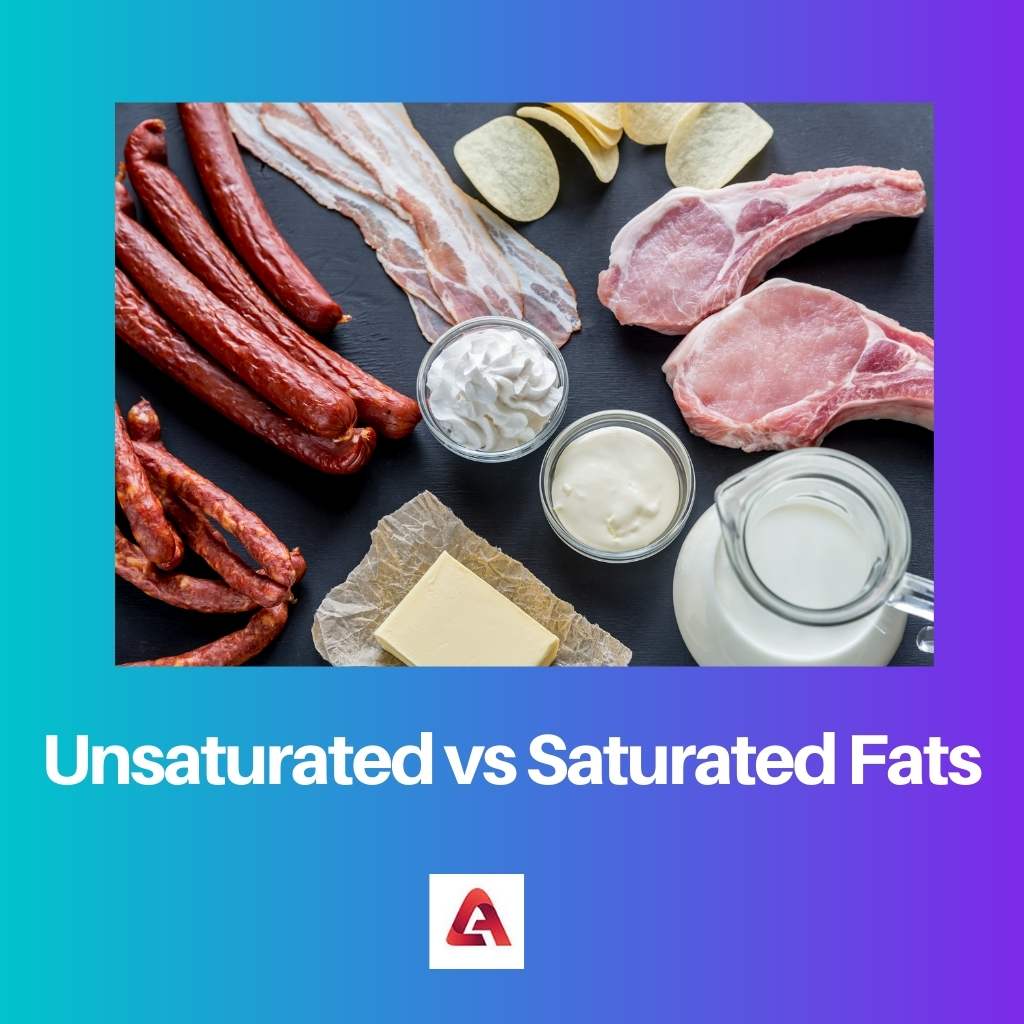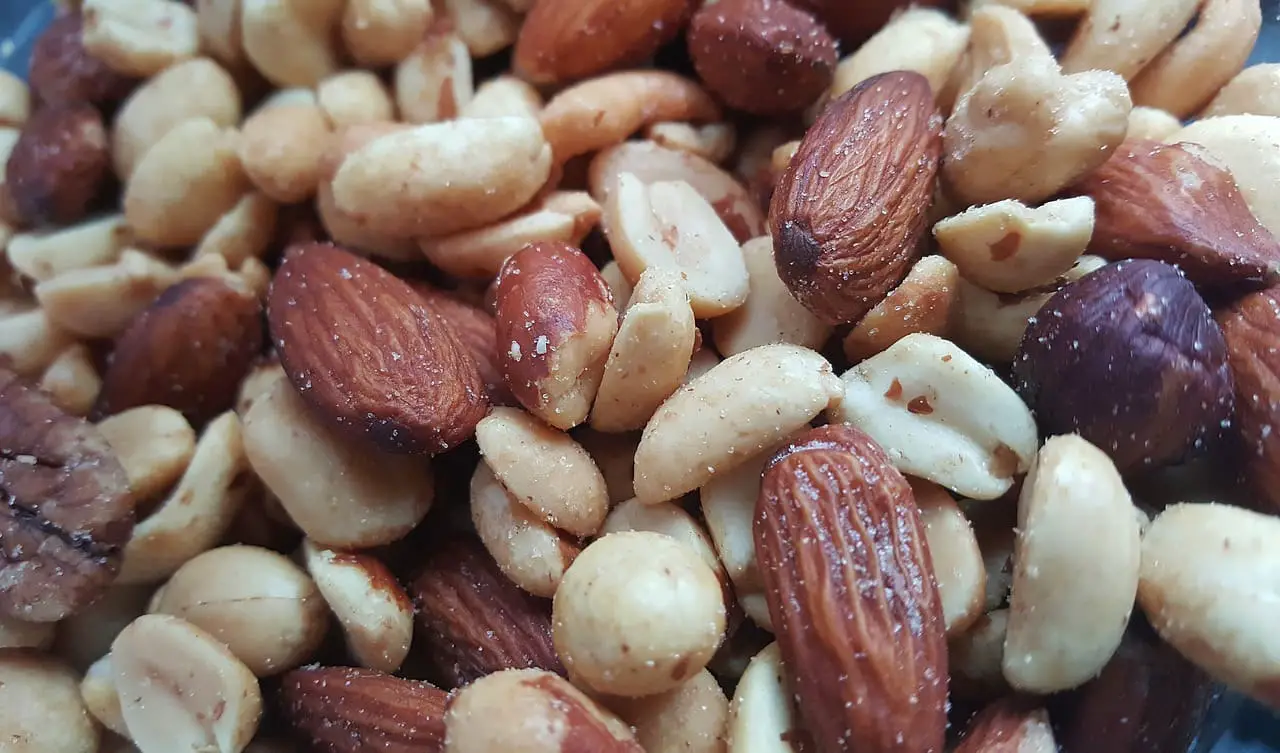Our metabolic mechanism supplies us with the glucose we need to keep our bodies running properly. This strength is derived from the food that we eat.
Carbohydrates, enzymes, and fats are the three primary macronutrients that assist in energy production in the body. Fat is an essential ingredient that helps to keep us nourished and preserves our structures.
Key Takeaways
- Unsaturated fats contain one or more double bonds in their molecular structure, while saturated fats have only single bonds.
- Unsaturated fats are liquid at room temperature and are mainly found in plant-based sources, whereas saturated fats are solid and come from animal sources and some plant oils.
- Unsaturated fats promote heart health by lowering LDL cholesterol, whereas excessive saturated fat intake can increase LDL cholesterol and contribute to heart disease.
Unsaturated vs Saturated Fats
The difference between unsaturated and saturated fat is that Unsaturated fats are chemically defined as having one or maybe more double or quadruple bonds linking carbon molecules. On the other hand, saturated fats have a molecular structure in which the atomic orbitals are saturated with water molecules, and there are no double bonds connecting hydrocarbon chains.

The metabolism requires unsaturated fats. Several dietary guidelines encourage getting a larger proportion of your fat through unsaturated fats. They increase healthy cholesterol. Unsaturated fats aid in the healthy working of the organism.
The fatty acid sequence of unsaturated fats has, at minimum, one double linkage. Unsaturated fats aid in the reduction of bad cholesterol and the formation of the sturdier cellular membrane in the body.
Body Health necessitates saturated fats. Excessive ingestion of saturated fats can raise harmful cholesterol levels in the body, increasing the threat of cardiovascular problems.
Saturated fats can raise LDL cholesterol levels. Saturated fatty acids would block arteries, thereby increasing the risk of heart failure. Saturated fats do not have covalent connections connecting the carbon molecules.
Comparison Table
| Parameters of Comparison | Unsaturated Fats | Saturated Fats |
|---|---|---|
| Contain | Unsaturated fats have at least one double connection. | Saturated fats only have one connection. |
| Consume | Unsaturated fats must not account for moreover 30% of overall calories absorbed in a day. | Saturated fats must not account for moreover 10% of overall calories absorbed in a day. |
| Melting Point | The melting temperature of unsaturated fats is lesser. | The melting temperature of saturated fats is very greater. |
| State | At ambient temperature, unsaturated fats are normally found in liquid form. | At ambient temperature, saturated fats are frequently located in a solid form. |
| Food Sources | It can be found in almonds, linen, avocado, ghee, peanut oil, oily fish, corn oil, processed meats, and other foods. | It can be found in whole yogurt, cream cheese, ghee, sweet almond oil, cooking oil, offal, peanuts, fried foods, etc. |
What are Unsaturated Fats?
Unsaturated fats are chemically defined as having one or perhaps more double or multiple bonds connecting carbon molecules. At ambient pressure, these compounds are soluble in the form of oil.
They can also be found in solid meals. Such compounds are even subsequently classified as monounsaturated and polyunsaturated fats.
Monounsaturated fats, which have one carbon-to-carbon quadruple connection, can help manage blood pressure and insulin values, reduce due levels of cholesterol, and decrease your risk of cardiovascular disease.
Experts advise replacing as many saturated fats as appropriate with monounsaturated fatty acids found in numerous foods such as cooking oil, soybean oil, sunflower oil, nuts, pecans, and guacamole.
Polyunsaturated fatty acids are essential to frequent bodily processes such as obscuring nerves, erecting cell membranes, endothelial dysfunction, and muscle activity because they contain two or more quintuple bonds in their chemical components.
However, because your body cannot produce the above fats, it is highly suggested that you retrieve your polyunsaturated fats from your daily intake.
These unsaturated fats not only assist your body in accomplishing critical processes but also lower dangerous triglycerides, decrease blood pressure, and enhance the good sort of cholesterol.
They also help reduce the severity of many other health issues.

What are Saturated Fats?
Saturated triglycerides are “saturated” with hydronium ions molecules and contain single interactions between their components. At ambient temperature, they are solid.
Poultry and dairy items with high levels of dietary cholesterol include cheddar, yoghurt, desserts, high-fat cured meats, coconut oil, and palm kernel oil.
According to a 2015 systematic review, standard-size triglycerides may be the healthiest kind of saturated fat.
The dispute about whether trans fat ingestion is harmful to heart health has raged for centuries. Buyers are particularly perplexed by the contradicting conclusions of data analysis studies on the influence of saturated fat on cardiovascular health.
While it is apparent that trans fats enhance fatty acid metabolism, especially low-density plasma HDL cholesterol and some other cardiovascular disease risk indicators, such as agitation, it is uncertain if saturated fats boost the risk of heart failure.
“Current data do not corroborate cardiovascular recommendations that urge excessive consumption of oxygenated fatty acids and reduced absorption of cumulative saturated fats,” the analysis stated.
While the study on this topic is underway, it’s crucial to remember that saturated fat is only one component of your overall nutritional consumption.
The sheer performance of your food intake and activity are the most important factors in preserving your wellness and lowering your illness risk.

Main Differences Between Unsaturated and Saturated Fats
- Unsaturated fats are useful for you, but too much of them can raise your cholesterol. On the other hand, overindulgence of saturated fats gives rise to heart illnesses.
- Unsaturated fats significantly raise greater lipoprotein, also known as descent cholesterol, also lessening low-density lipoproteins (LDL). Saturated fats, on the other hand, raise low lipoproteins, also known as horrible cholesterol.
- At ambient temperature, unsaturated fats are normally found in liquid form. Whereas, at ambient temperature, saturated fats are frequently located in a solid form.
- Unsaturated fats must not account for 30% of overall calories absorbed daily. Whereas, Saturated fats must not account for moreover 10% of overall calories absorbed in a day.
- Unsaturated fats degrade rapidly. Saturated fat, on the contrary, does not mess up easily. The melting temperature of unsaturated fats is lesser. The melting temperature of saturated fats is very greater.

- https://www.tandfonline.com/doi/abs/10.1080/00071669987908
- https://www.jacc.org/doi/abs/10.1016/j.jacc.2015.07.055

The difference between unsaturated and saturated fats is well explained. I enjoyed reading this.
The article presents the facts, but it is only one side of the story.
I think the article gives a thorough explanation of unsaturated and saturated fats.
I have to agree. A more balanced approach would make the article better.
This is very well-written, and I appreciate the references.
Good read, enjoyed all the information.
I agree Carlie, the information provided is excellent.
I disagree with some points, but overall, this is a good piece.
The content is very informative, but I think it’s a little biased.